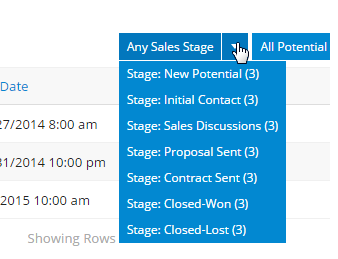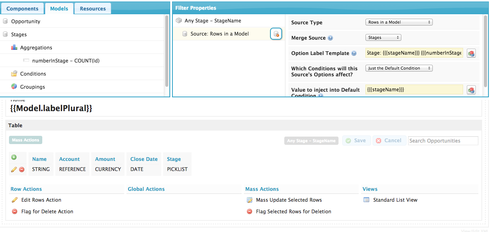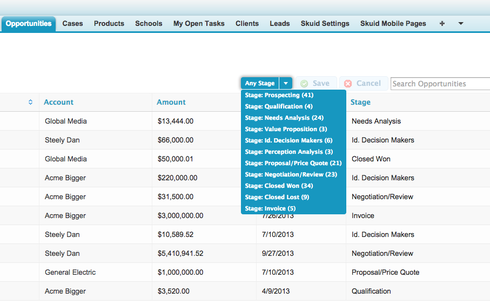Hello!
I am trying to add a count of the record that match a filter’s criteria in that filter’s label via the suffix.
Currently I have a global variable ({{$Model.Potential.data.length}}) that is giving me a count of the entire model, but I want it to show how many records of each Sales Stage there are. Any ideas? Thanks!
Question
Record count in filter label suffix
 +9
+9This topic has been closed for replies.
Enter your E-mail address. We'll send you an e-mail with instructions to reset your password.







